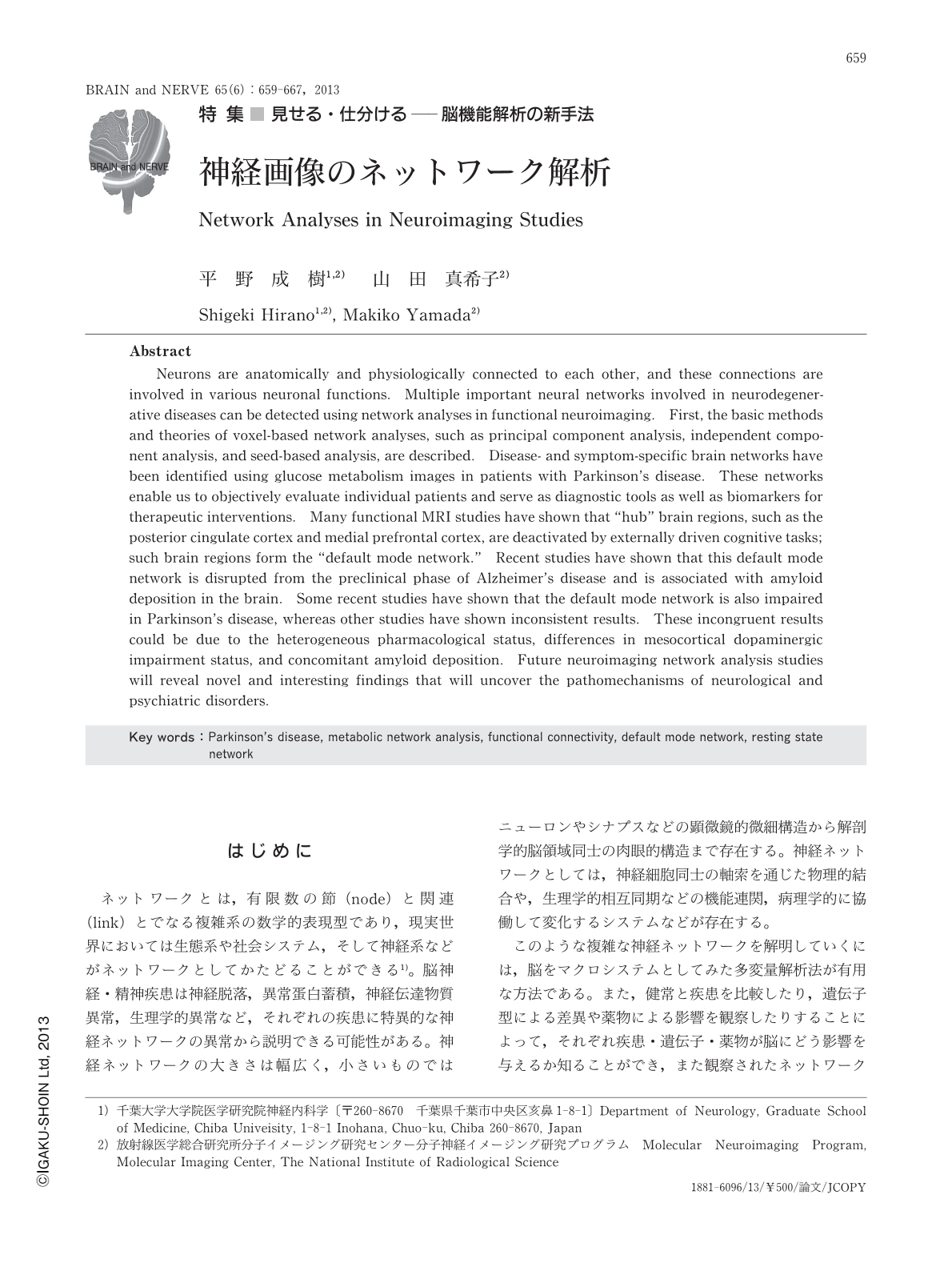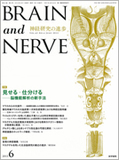Japanese
English
- 有料閲覧
- Abstract 文献概要
- 1ページ目 Look Inside
- 参考文献 Reference
はじめに
ネットワークとは,有限数の節(node)と関連(link)とでなる複雑系の数学的表現型であり,現実世界においては生態系や社会システム,そして神経系などがネットワークとしてかたどることができる1)。脳神経・精神疾患は神経脱落,異常蛋白蓄積,神経伝達物質異常,生理学的異常など,それぞれの疾患に特異的な神経ネットワークの異常から説明できる可能性がある。神経ネットワークの大きさは幅広く,小さいものではニューロンやシナプスなどの顕微鏡的微細構造から解剖学的脳領域同士の肉眼的構造まで存在する。神経ネットワークとしては,神経細胞同士の軸索を通じた物理的結合や,生理学的相互同期などの機能連関,病理学的に協働して変化するシステムなどが存在する。
このような複雑な神経ネットワークを解明していくには,脳をマクロシステムとしてみた多変量解析法が有用な方法である。また,健常と疾患を比較したり,遺伝子型による差異や薬物による影響を観察したりすることによって,それぞれ疾患・遺伝子・薬物が脳にどう影響を与えるか知ることができ,また観察されたネットワークが他のどのネットワークと類似しているのかを比較検討することによって,疾患病態をより深く理解できる。画像研究には病理学的知見の裏づけが重要であるが,脳機能画像研究の利点として,病理学的研究に比べ容易にin vivoで脳機能を観察できるため症候との関連や縦断的研究が可能なばかりでなく,全脳を隈なく探索することや,解剖学的異常を認めなくとも機能的変化を捉えることが可能であることなどが挙げられる。
本稿ではまず総論として神経機能画像のネットワーク解析法について解説し,次にパーキンソン病を疾患モデルとして,安静時糖代謝ポジトロン断層法(positron emission tomography:PET)を用いた多変量解析法による病態研究を述べ,最後に安静時における機能的磁気共鳴画像法(functional magnetic resonance imaging:fMRI)を用いたネットワーク解析について概説する。
Abstract
Neurons are anatomically and physiologically connected to each other, and these connections are involved in various neuronal functions. Multiple important neural networks involved in neurodegenerative diseases can be detected using network analyses in functional neuroimaging. First, the basic methods and theories of voxel-based network analyses, such as principal component analysis, independent component analysis, and seed-based analysis, are described. Disease- and symptom-specific brain networks have been identified using glucose metabolism images in patients with Parkinson's disease. These networks enable us to objectively evaluate individual patients and serve as diagnostic tools as well as biomarkers for therapeutic interventions. Many functional MRI studies have shown that "hub" brain regions, such as the posterior cingulate cortex and medial prefrontal cortex, are deactivated by externally driven cognitive tasks; such brain regions form the "default mode network." Recent studies have shown that this default mode network is disrupted from the preclinical phase of Alzheimer's disease and is associated with amyloid deposition in the brain. Some recent studies have shown that the default mode network is also impaired in Parkinson's disease, whereas other studies have shown inconsistent results. These incongruent results could be due to the heterogeneous pharmacological status, differences in mesocortical dopaminergic impairment status, and concomitant amyloid deposition. Future neuroimaging network analysis studies will reveal novel and interesting findings that will uncover the pathomechanisms of neurological and psychiatric disorders.

Copyright © 2013, Igaku-Shoin Ltd. All rights reserved.


